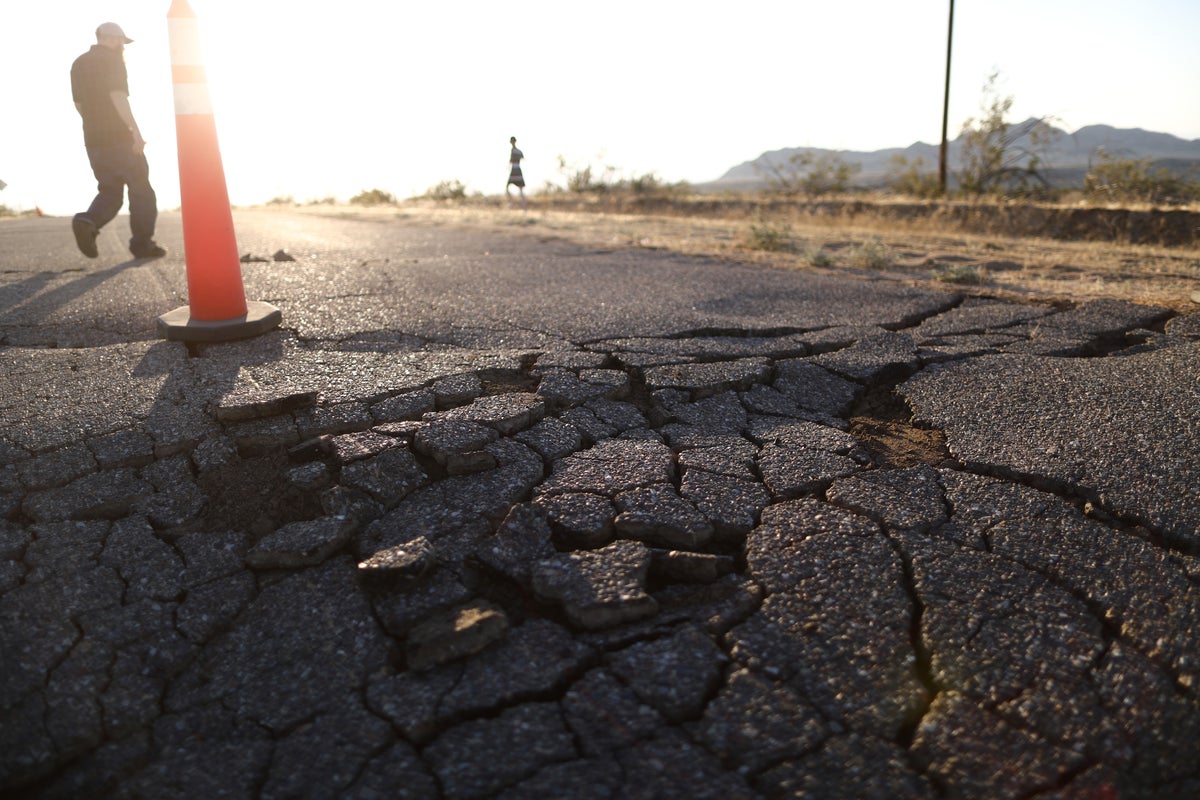T4K3.news
2.5-Meter Fault Slip Captured in Myanmar Earthquake
A CCTV footage revealed dramatic fault movement during the 2025 earthquake near Mandalay.

Incredible footage reveals earthquake’s 2.5-meter fault slip.
Stunning Footage Reveals Earthquake Dynamics in Myanmar
On March 28, 2025, central Myanmar was struck by a 7.7 magnitude earthquake near the Sagaing Fault, marking the second-deadliest quake in the nation's history. The epicenter lay close to Mandalay, where a CCTV camera captured real-time footage of the fault slipping 2.5 meters in just 1.3 seconds. Researchers at Kyoto University analyzed the video and discovered a rapid fault movement that confirms pulse-like ruptures, challenging previous theories about earthquake mechanics. This footage provides unprecedented insights into the nature of fault behavior and suggests that future monitoring could revolutionize how scientists understand and predict seismic events.
Key Takeaways
"The brief duration of motion confirms a pulse-like rupture, characterized by a concentrated burst of slip."
This quote from Jesse Kearse highlights the key findings regarding fault dynamics during the earthquake.
"We did not anticipate that this video record would provide such a rich variety of detailed observations."
Kearse emphasizes the unexpected depth of data gained from the footage, underlining its importance.
The recent earthquake in Myanmar underscores the significance of modern technology in seismology. Capturing real-time footage of a fault slip opens new doors for scientific research, allowing scientists to gather data that was previously unattainable. This event challenges long-held beliefs about fault dynamics, especially the notion that movements are linear. As Jesse Kearse indicates, discovering that fault slips may often follow curved paths has profound implications, possibly reshaping how we prepare for and respond to future earthquakes. The transition to video-based monitoring could make a notable impact in enhancing earthquake preparedness worldwide.
Highlights
- Fault movements are more complex than we thought.
- Real-time footage can reshape our understanding of earthquakes.
- This could revolutionize how we prepare for seismic events.
- Curved fault paths challenge conventional earthquake theories.
Potential Geopolitical Sensitivity
The earthquake's severity and implications for local infrastructure and public safety could spark public concern and political discussions on disaster readiness.
Advancements in seismology could significantly impact disaster readiness in quake-prone areas.
Enjoyed this? Let your friends know!
Related News

CCTV captures earthquake in Myanmar at unprecedented speed
Unique footage reveals new details of earthquake behavior

Myanmar earthquake's unique rupture speeds confirmed

Scientists Warn of Earthquake Risk in Yukon Territory

Potential major earthquake threat identified in Canada

New research warns of earthquake risk from Canadian fault

Hidden earthquake risk discovered under North America

Warning Issued for Tintina Fault Earthquake Risk
